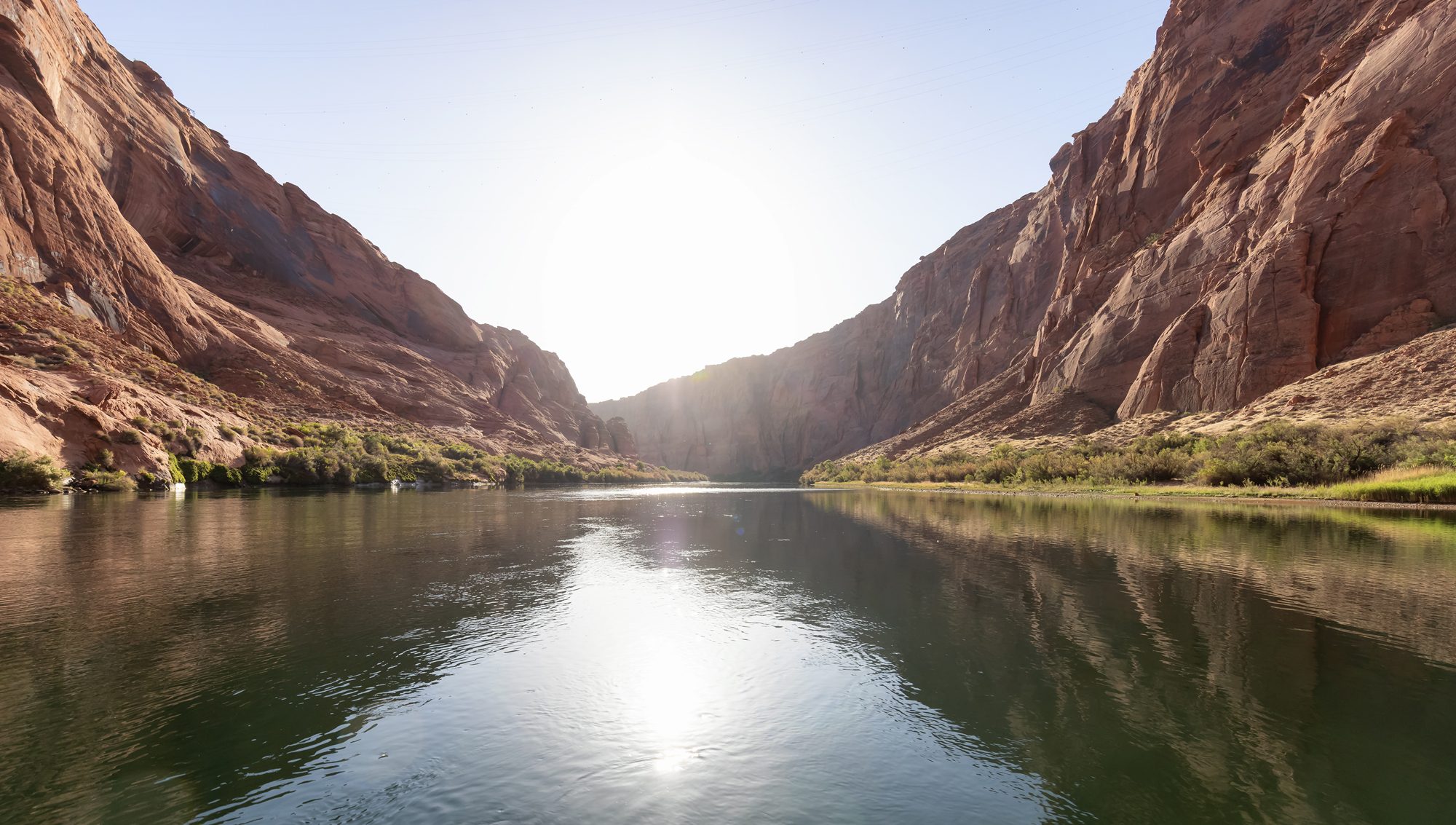- The 2007 operating rules start expiring December 31, 2025.
- Some forbearance and conservation agreements end in 2026.
- Without a new plan, operations revert to 1970 criteria with broader federal discretion.
- Arizona could face deep cuts to Central Arizona Project deliveries under continued dry conditions.
Friday, August 15, 2025 — This week, Arizona State University’s Kyl Center for Water Policy released a plain-language explainer on what comes next as the 2007 Colorado River operating guidelines wind down. The publication focuses on how expiring rules and side agreements could affect Arizona if the seven basin states do not reach a new operating plan for 2026. This report
released a plain-language explainer on what comes next as the 2007 Colorado River operating guidelines wind down. The publication focuses on how expiring rules and side agreements could affect Arizona if the seven basin states do not reach a new operating plan for 2026. This report is the basis for the information below.
is the basis for the information below.
Background on allocations and reservoirs.
Under the 1922 Colorado River Compact, the Upper Division states and Lower Division states each received 7.5 million acre-feet per year, and a 1944 treaty provides 1.5 million acre-feet for Mexico. Arizona’s mainstream allocation was confirmed at 2.8 million acre-feet in the U.S. Supreme Court’s 1963 decision Arizona v. California, which is about 36 percent of Arizona’s total water use. Lake Powell and Lake Mead store and deliver these supplies under the Secretary of the Interior’s authority.
What the 2007 guidelines did.
Adopted after years of drought, the 2007 guidelines sought to stabilize reservoir levels, set shortage tiers for the Lower Basin, and allow certain entities to conserve and hold “assigned water” in Lake Mead, often known as Intentionally Created Surplus. The guidelines expire on December 31, 2025, although many provisions continue through 2026. Shortage declarations for the Lower Basin have been tied to Lake Mead’s projected January 1 elevation, with specific volumes reduced at elevations of 1,075 feet, 1,050 feet, and 1,025 feet.
Added measures since 2019.
Lower Basin entities entered additional agreements in 2019, 2021, and 2023 to slow the drop in Lake Mead. These include voluntary contributions of assigned water under the 2019 Drought Contingency Plan, and large volumes of unassigned “system conservation” water funded by the federal government under 2021 and 2023 arrangements. Together, the states committed to leave about three million acre-feet of unassigned water in Lake Mead through 2026, with payments to water providers, tribes, agricultural districts, and others.
What expires and when.
Two types of legal tools end on different timelines:
-
Operating guidelines: The 2007 guidelines end in 2025, with many provisions running through 2026.
-
Forbearance agreements: Key forbearance agreements that protect assigned water from being ordered by other users expire December 31, 2025, with some protections for already created assigned water continuing to 2036 or 2056, depending on how it was created. Agreements tied to system conservation expire at the end of 2026.
What happens if no new plan is in place.
If there is no replacement agreement for 2026, several operational defaults apply:
-
Reversion to 1970 Long-Range Operating Criteria: Releases from Lake Powell to Lake Mead would generally return to an objective of 8.23 million acre-feet per year, subject to the Secretary’s discretion and hydrologic conditions.
-
Shortage determinations: The specific shortage tiers from 2007 would no longer control. The Secretary would determine when mainstream supplies under 7.5 million acre-feet are insufficient, then curtail deliveries according to priorities and the Supreme Court’s decree.
-
Assigned water creation: Some forms of assigned water could no longer be newly created, while other types, such as imports of non-system water or certain tributary sources, could continue. Rights to hold and deliver already created assigned water would continue for set periods.
Implications for Arizona.
The explainer notes that, with continued poor hydrology and runoff, Arizona could see very deep reductions to Central Arizona Project deliveries. Under more severe conditions, impacts could extend to higher priority users along the river in Mohave, La Paz, and Yuma counties. These statements describe potential outcomes under existing law if storage continues to decline and a new plan is not adopted.
Cross-border provisions with Mexico.
Treaty “minutes” that specify shortage sharing for Mexico and allow Mexico to create assigned water in Lake Mead are described as expiring at the end of 2026. Mexico may continue to hold and call for delivery of already created assigned water under terms similar to Lower Basin entities.
Ten-year delivery accounting at Lee Ferry.
The document explains a Lower Basin position that the Upper Division must ensure a ten-year aggregate of 82.5 million acre-feet passes Lee Ferry when including one-half of the Mexican treaty burden. It also notes that, under continued dry conditions, the ten-year total could dip below this amount in 2027, which could trigger legal claims.
Attribution.
This article is based on the Arizona State University Morrison Institute’s Kyl Center for Water Policy explainer, “Arizona Guide to the Expiration of the 2007 Operating Guidelines for Lakes Powell and Mead ,” dated August 12, 2025.
,” dated August 12, 2025.
Editor’s note: This piece is published August 15, 2025, and is intended as a neutral summary of the Kyl Center’s publication.



